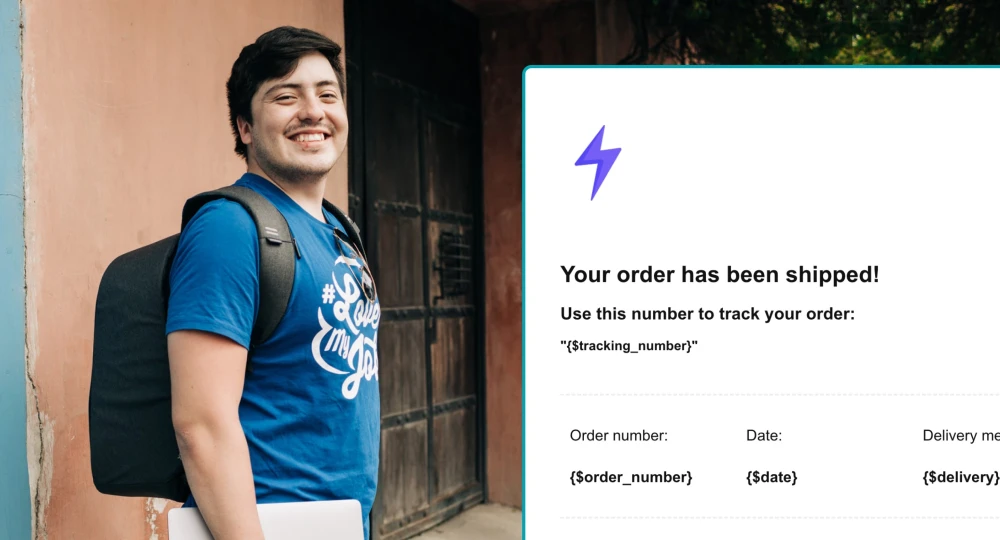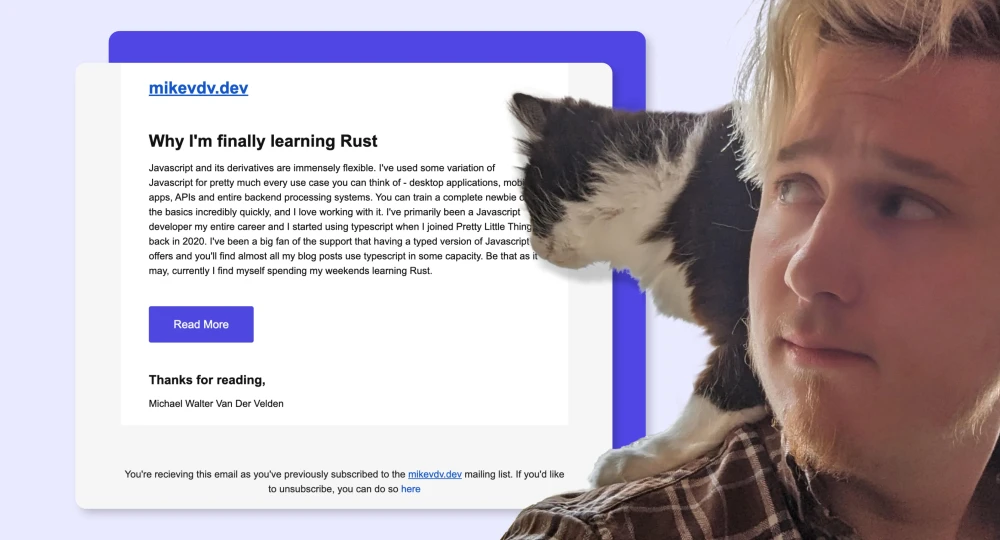How to deliver the best transactional email experience

- Transactional email best practices
- 1. Match your emails with your brand voice and design
- 2. Use a recognizable and readable email address
- 3. Avoid the use of “no-reply” addresses
- 4. Be concise with your subject line and pre-header text
- 5. Keep promotional emails separate
- 6. Boost engagement with social media links
- 7. Use clear calls-to-action (CTAs)
- 8. Make the most of your email footer
- 9. Split test your emails
- 10. Ensure your email templates are responsive
- 11. Include a plain text version of your email
- 12. Adopt email authentication and security practices
- 13. Allow people to manage their email preferences
- 14. Monitor your email activity regularly
- 15. Follow data protection rules (GDPR)
- 16. Pick a reliable email service provider
- Give your customers the best experience now
Raise your hand if you’ve had to refresh your inbox multiple times waiting to receive an account verification email or password reset email.
Waiting more than 5 minutes for a transactional email or, worse, receiving it the next day is unacceptable to most customers. You might have also received a transaction message that looked suspicious. Perhaps it was flagged by your ISP, had an unrecognizable email address, or a bad design.
These transactional email mistakes happen all too often!
Paying closer attention to how people experience your transactional emails will give you an edge over your competitors. A great transactional email experience will increase trust, leading to happy customers who are more likely to interact with you again, recommend you to family and friends, and promote you on social media.
We’ve got 16 transactional email best practices that will help you deliver a top-notch experience.
16 transactional email best practices that deliver
Transactional emails enjoy high open rates—higher than their email marketing counterparts. That spells O P P O R T U N I T Y! Let’s take a look at the ways different types of transactional emails can help reinforce your brand, boost engagement, and drive conversions.
1. Match your emails with your brand voice and design
Transactional emails that look like they’ve been quickly designed and written by the back office or fulfillment team can ruin your brand. Your emails should always match the voice, look and feel of your company.
As Revolut’s example shows, transactional emails don’t have to be boring! Give your customers a seamless experience by using the same branding in your email marketing campaigns and your transactional emails.
This free trial expiration email speaks to Revolut’s target audience through the brand’sunique voice and conversational style. Most importantly, it provides a satisfying finish to the transaction—Revolut builds trust by showing users that they care about their experience and not simply making money from them.
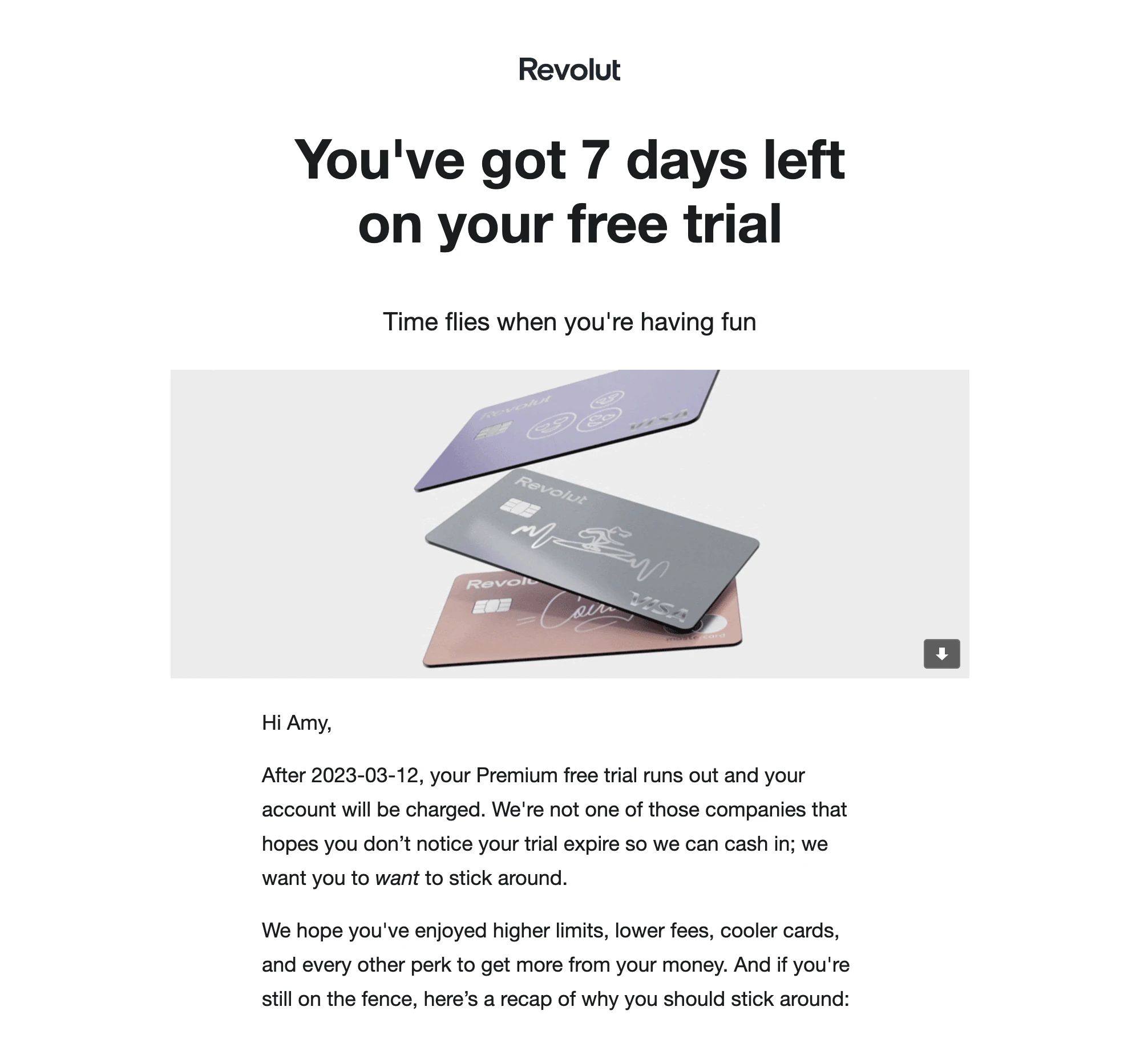
Just like your marketing emails, your transactional emails can benefit from your brand identity as well. You shouldn’t treat them as an afterthought as they can play a part in boosting your marketing efforts and providing a delightful customer experience.
Need some inspiration for your transactional email designs? We showcase 15 examples that stand out from the crowd and deliver a great experience!
2. Use a recognizable and readable email address
Email messages that have cryptic “From” names, strange reply addresses or odd email sub-domains are one click away from being deleted or marked as spam.
Recipients are looking out for your transactional emails so make them easy to spot. Use a readable “From” name, a simple reply-to address, and BIMI so that a logo is assigned to your domain and people can recognize your emails at first glance. (Learn more about BIMI in our guide to DNS records.)
This refund confirmation email from ASOS ticks all the right boxes. Their “From” name states the purpose upfront, there’s no ambiguity about who the sender is with their email address, and the subject line brings a smile to your face.
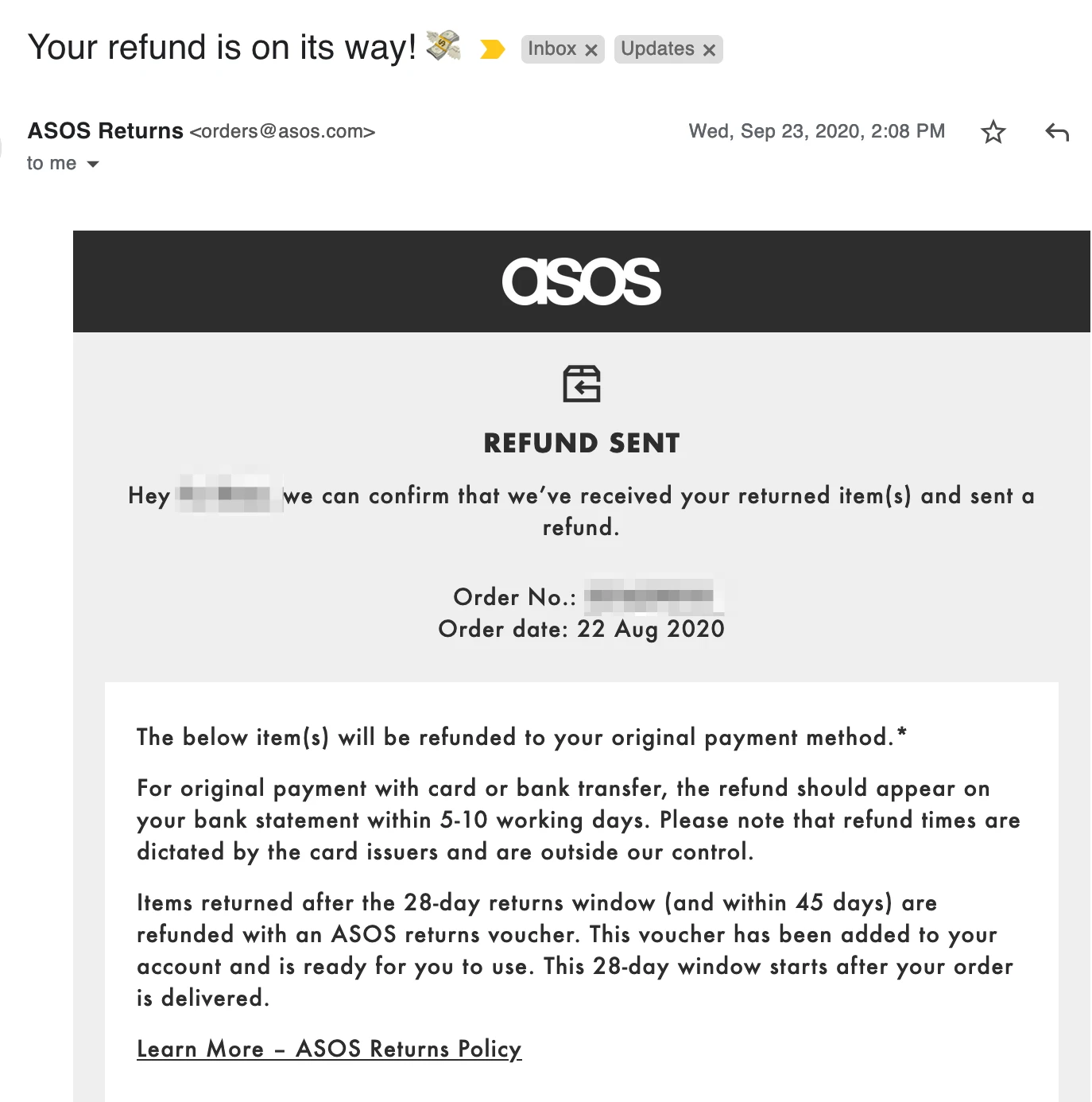
Transactional emails like these can help you sustain the after-sales support that customers have come to expect from your brand. Keep your email name and address simple and your customers will feel reassured that someone is taking care of them.
3. Avoid the use of “no-reply” addresses
The use of “no-reply” email addresses seems to be the norm rather than the exception. You can even find phrases in the email content like: “This is a system-generated email and replies to this address are not monitored.” What kind of message does this send to customers?
Recipients who have questions about the email’s contents are left frustrated because they’re discouraged from replying to the email. Sometimes there’s no clear way to reach out for help or contact someone!
Don’t limit your transactional emails to just reporting a transaction. Keep your door open by allowing customers to reply to a real address or put a “contact us” link in the email. Higher engagement rates with your emails can give your email deliverability a boost as well.
While Beauty Bay sends its transactional emails with a no-reply email address, they also include information about how recipients can contact its customer service team.
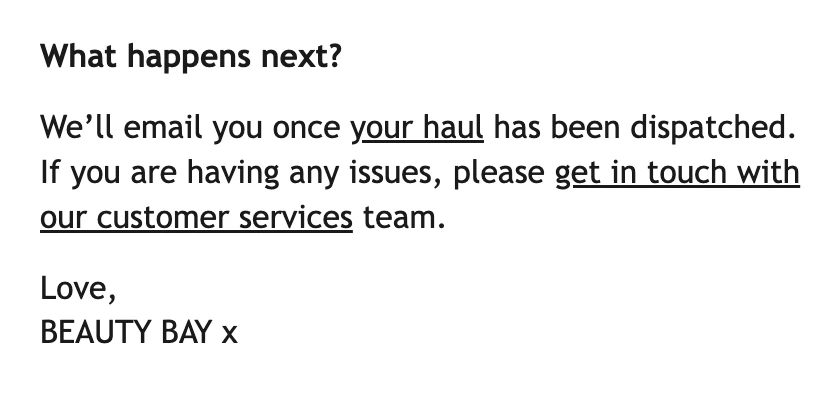
Here are some alternatives to no-reply email addresses you can use instead of slamming the door into the faces of your recipients!
4. Be concise with your subject line and pre-header text
Unlike marketing emails, your transactional email subject and pre-header text should be concise and straight to the point. Make sure your subject line is relevant to the recipient. Do this by referring to the specific action they had just taken like the following example.

Upon receiving a new smartwatch, your first step would be to register the product and download the app for it. Garmin thanks you for that with their subject line. It then goes further by subtly suggesting that you start using the watch and get the most out of it.
In summary, keep your subject line short and avoid inserting dates, months or your company name. The pre-header text should offer a tantalizing preview of the email’s content but keep it to less than 100 characters.
5. Keep promotional emails separate
Amazon knows a thing or two about transactional emails. Running such a large business means that they need to get their email marketing and transactional emails in order. Here, Amazon uses two separate email addresses for their promotional offer and the subsequent purchase of a digital book.
Promotional email
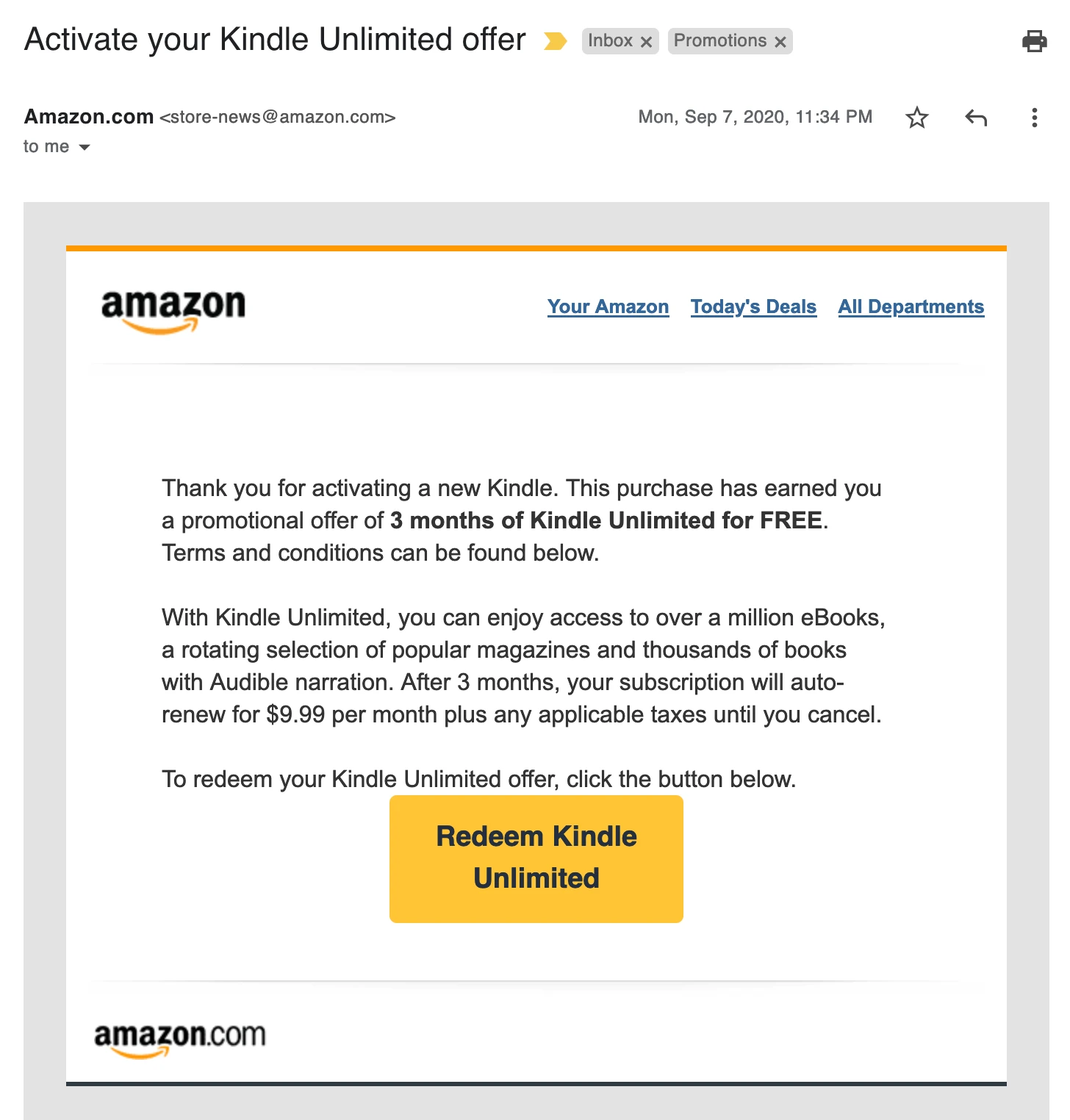
Transactional email
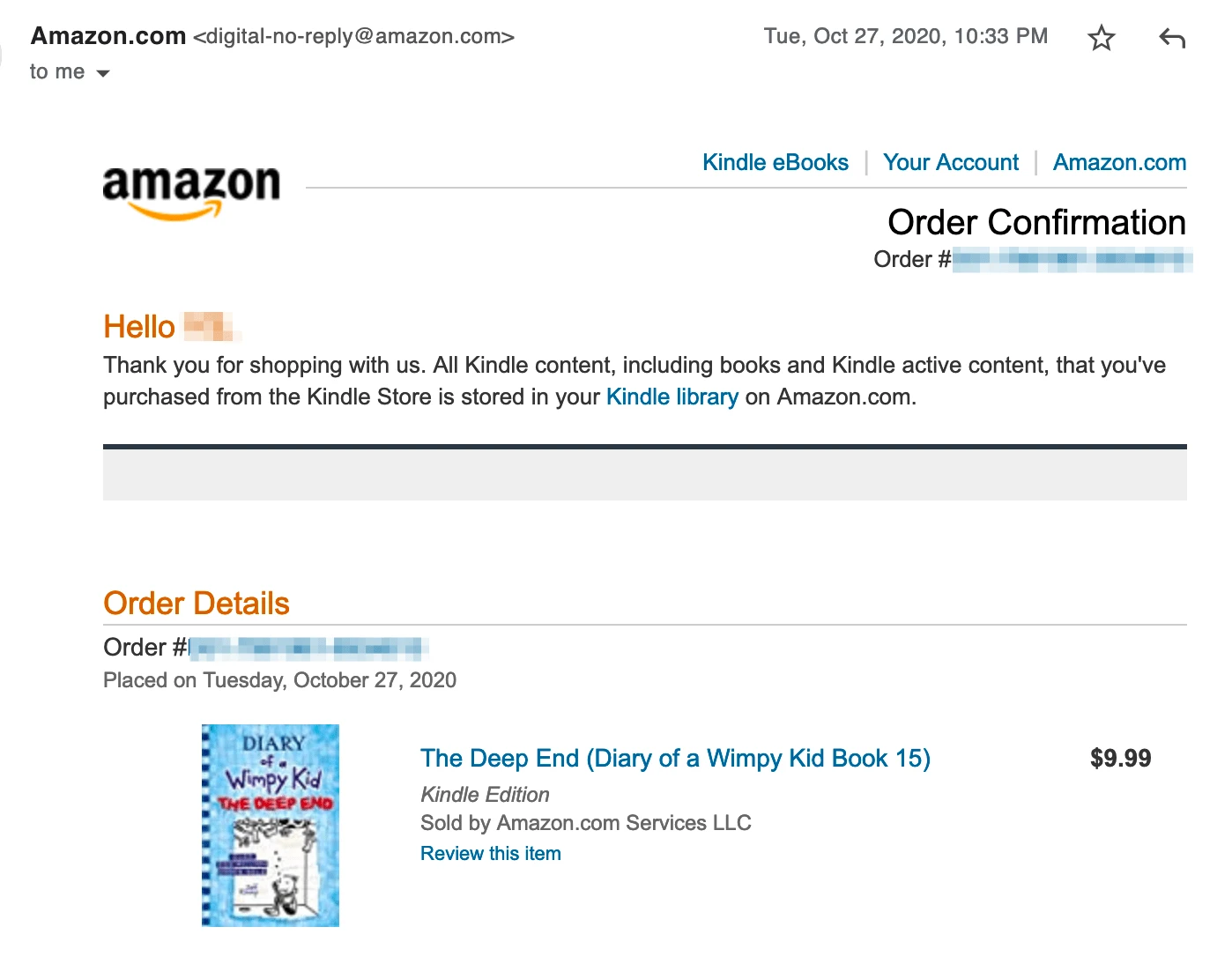
Keeping your marketing and promotional emails separate from your transactional emails is key for optimizing your deliverability. Each email address will enjoy a sending reputation tied to its IP address. Marketing emails may land in the junk or spam folders for various reasons but order confirmation emails, for example, should not.
6. Boost engagement with social media links
Transactional messages aren’t limited to just confirming or acknowledging your interactions with a business. They can also perform a quasi-marketing role by updating customers about items on their wish list.
MailerSend user PopEx displays social media icons prominently at the bottom of the message so recipients can connect with the brand further. They also include a CTA, encouraging recipients “Give us a follow!”.
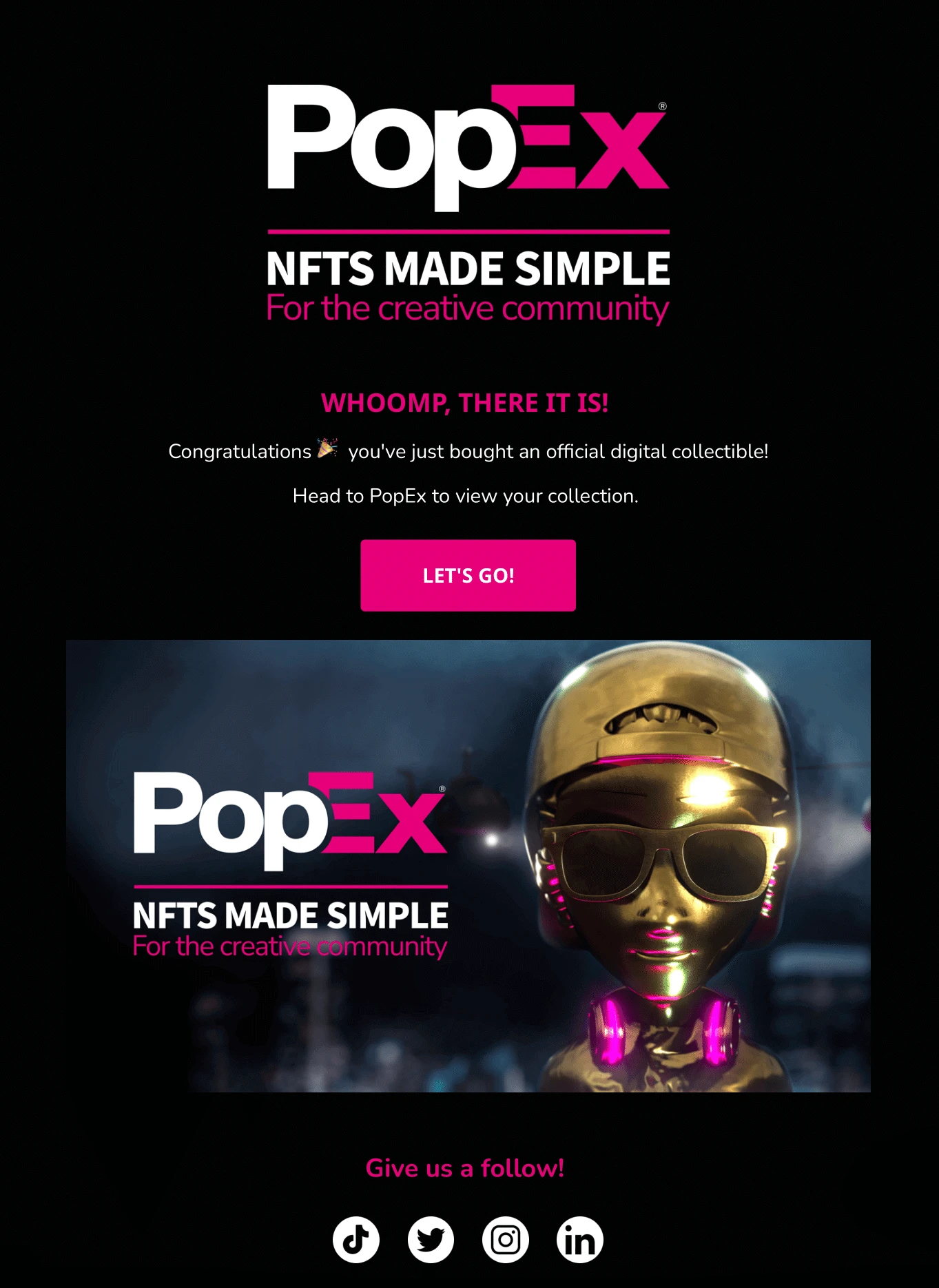
Sharing social media links in a transactional email helps you to keep the customer engaged once the email is closed. Recipients may not be interested in what you’re offering for now, but they may follow you on social media for future announcements or upcoming events.
You can easily insert social media icons and links into your transactional email templates with the social media block in MailerSend’s drag and drop builder.
7. Use clear calls-to-action (CTAs)
Sometimes users need a little push in the right direction, whether it’s to complete an important action such as a security check, or the next steps in an account set up. If you bury those CTAs in the main content of your email, they might go unnoticed. That’s why it’s important to create clear, enticing CTAs—they aren’t just for marketing emails!
Going back to Revolut’s fun, on-brand trial expiration email, we see a great example of a CTA done right. They explain exactly what the user needs to do to cancel their plan and then include a clear CTA button in their brand colors that describes exactly what clicking on it does.
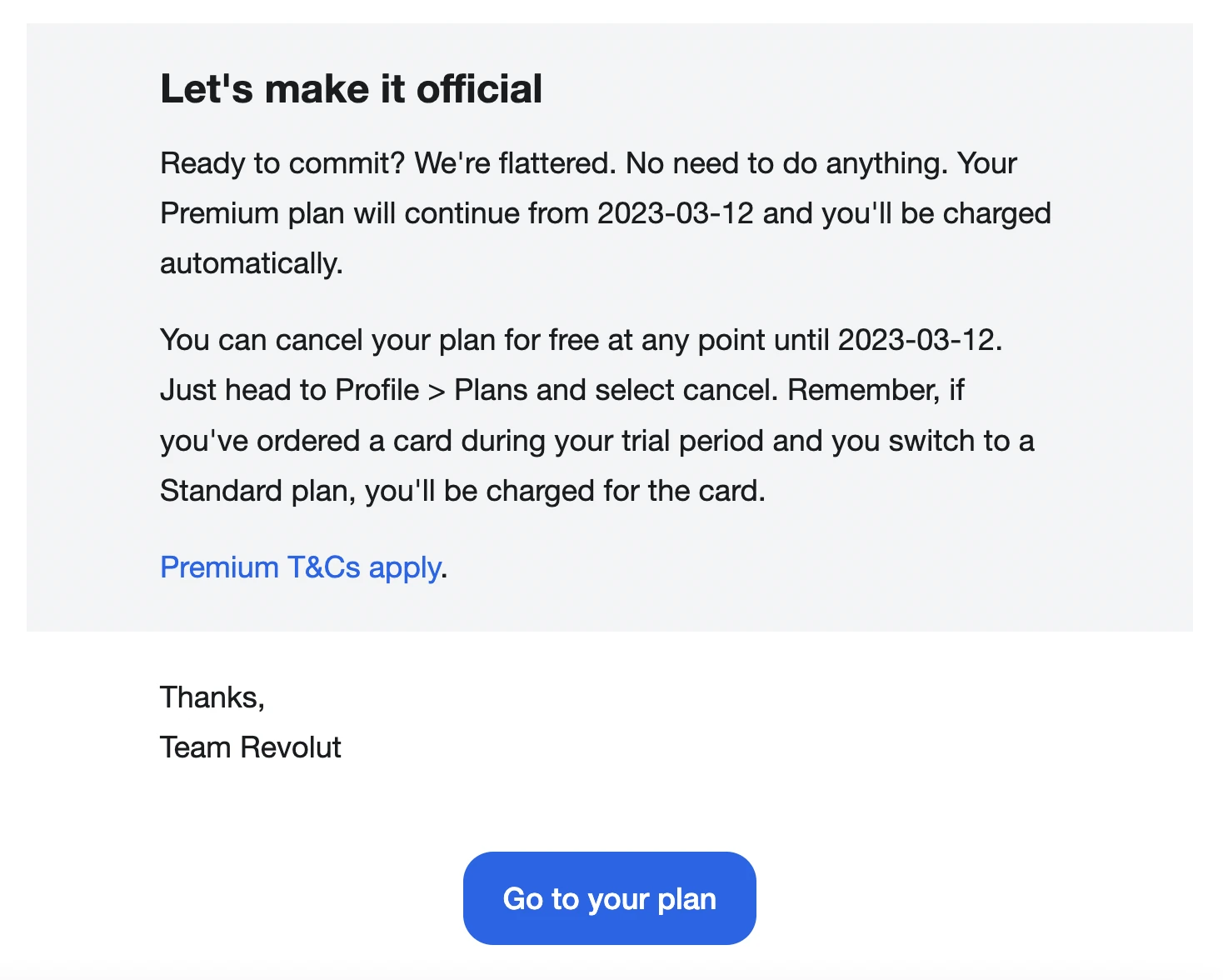
8. Make the most of your email footer
When an email recipient wants to find more information about your brand, they’ll often open an email and head straight to the footer to find contact information or links to your website and social media profiles. It’s ingrained in our minds that this is where we can find the official info we need about a company. So make it easy for your recipients by optimizing your email footer with:
Contact information and support links
Website link
Social media profiles
Unsubscribe link
App/dashboard link
Legal information
You can take it a step further by sharing links to download your app, a tagline or brand mission, personalized sign-off, or a request to add your email to the safe senders list. Just as with transactional emails as a whole, there is plenty of opportunity to make use of your email footer.
Cult Beauty’s email footer is an awesome example of using this often overlooked email real-estate to its full potential, by creating a mini resource center for customers. As well as finding social links, the privacy policy, and a link to add them to the safe senders list, they also include links to shipping information, FAQs, user accounts, the blog, and to refer a friend and update preferences.
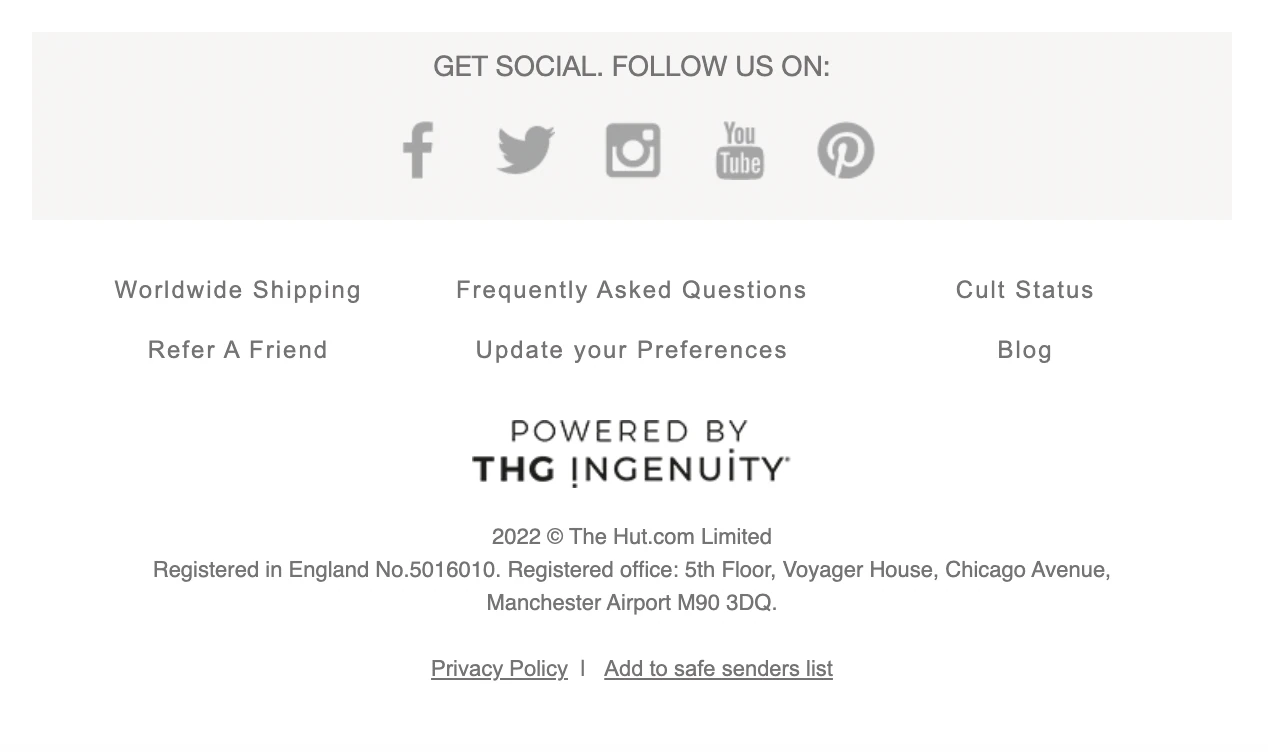
9. Split test your emails
You might be familiar with a/b testing marketing emails, but did you know it’s a great idea to split test your transactional emails too? They might not be promotional, but you still want to maximize opens and clicks, and reduce spam complaints and unsubscribes. After all, the goal is to provide an exceptional customer experience!
Testing different template variations is an effective way to learn which subject lines, content and CTAs perform the best with your customers. With these insights, you can continuously optimize your email templates.
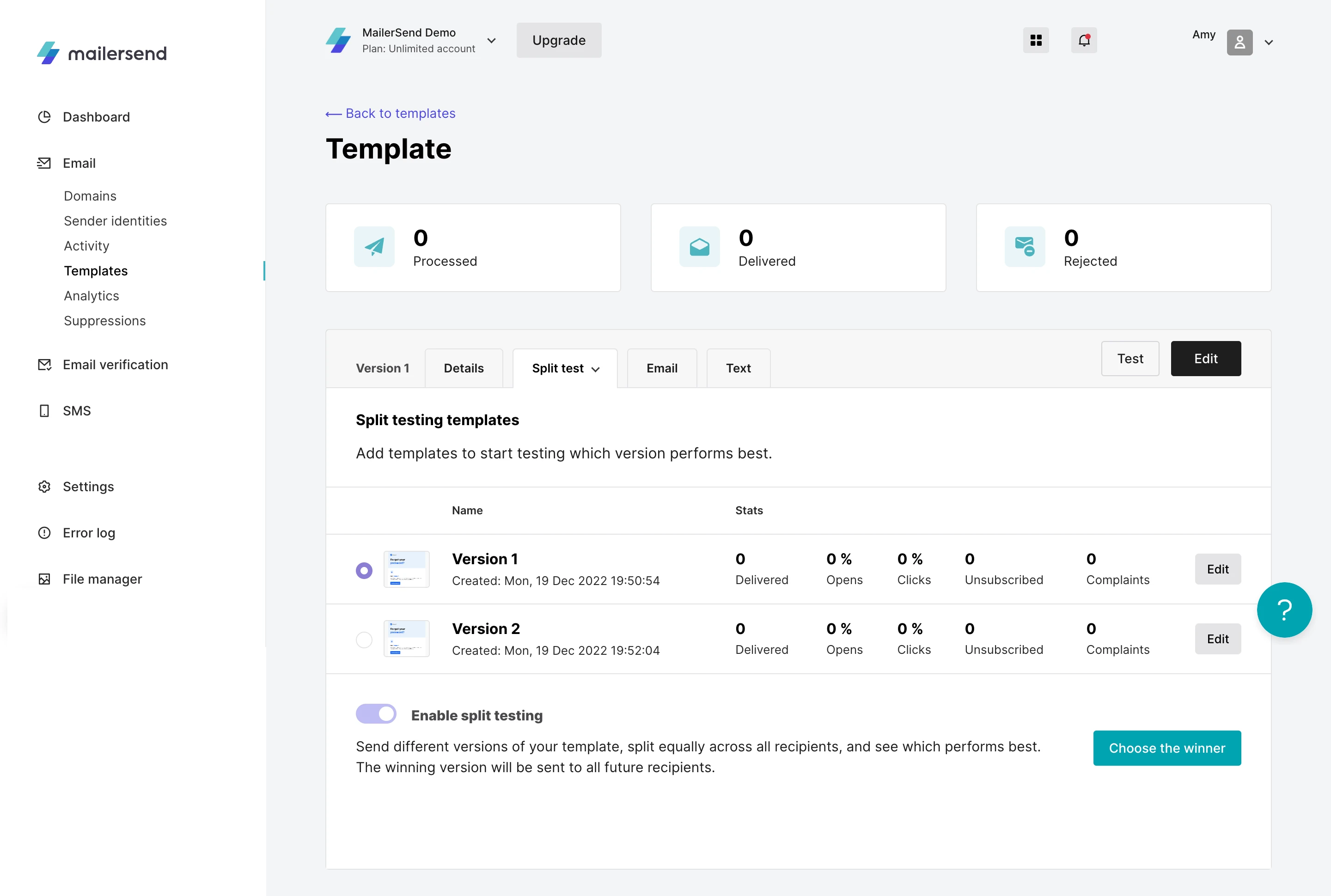
10. Ensure your email templates are responsive
When you’re sending thousands of transactional emails, how do you ensure that everyone can open and read them? Like marketing emails, you use responsive design for your email templates. This ensures your emails will look good on all screen sizes, from small mobile devices to desktops.
Look at how Foodpanda’s email is perfectly sized to completely fill a mobile screen. The font size is legible, you can digest all the information at a glance, and there’s no need to scroll down to see the call to action.
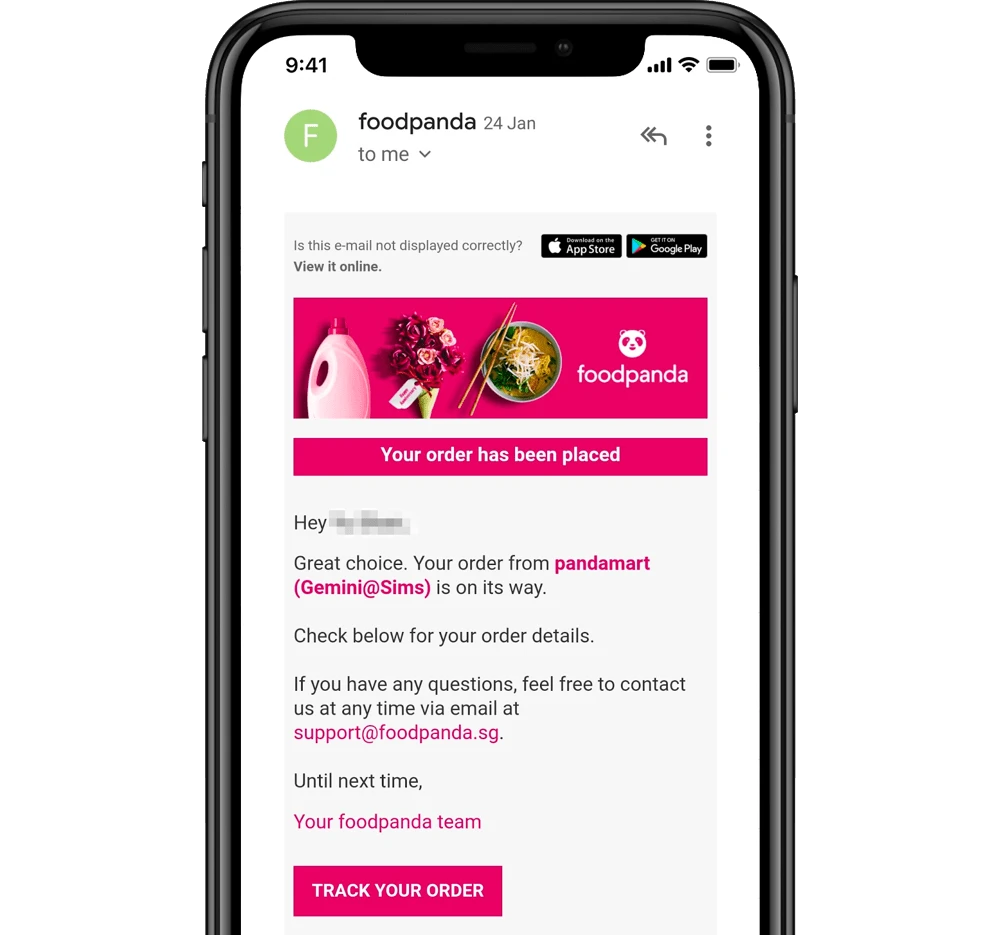
Here’s the same order confirmation email in Gmail displayed on a laptop screen. The graphic has resized itself to fill the screen comfortably and more whitespace has been added around the email. You can still take in everything with one look.
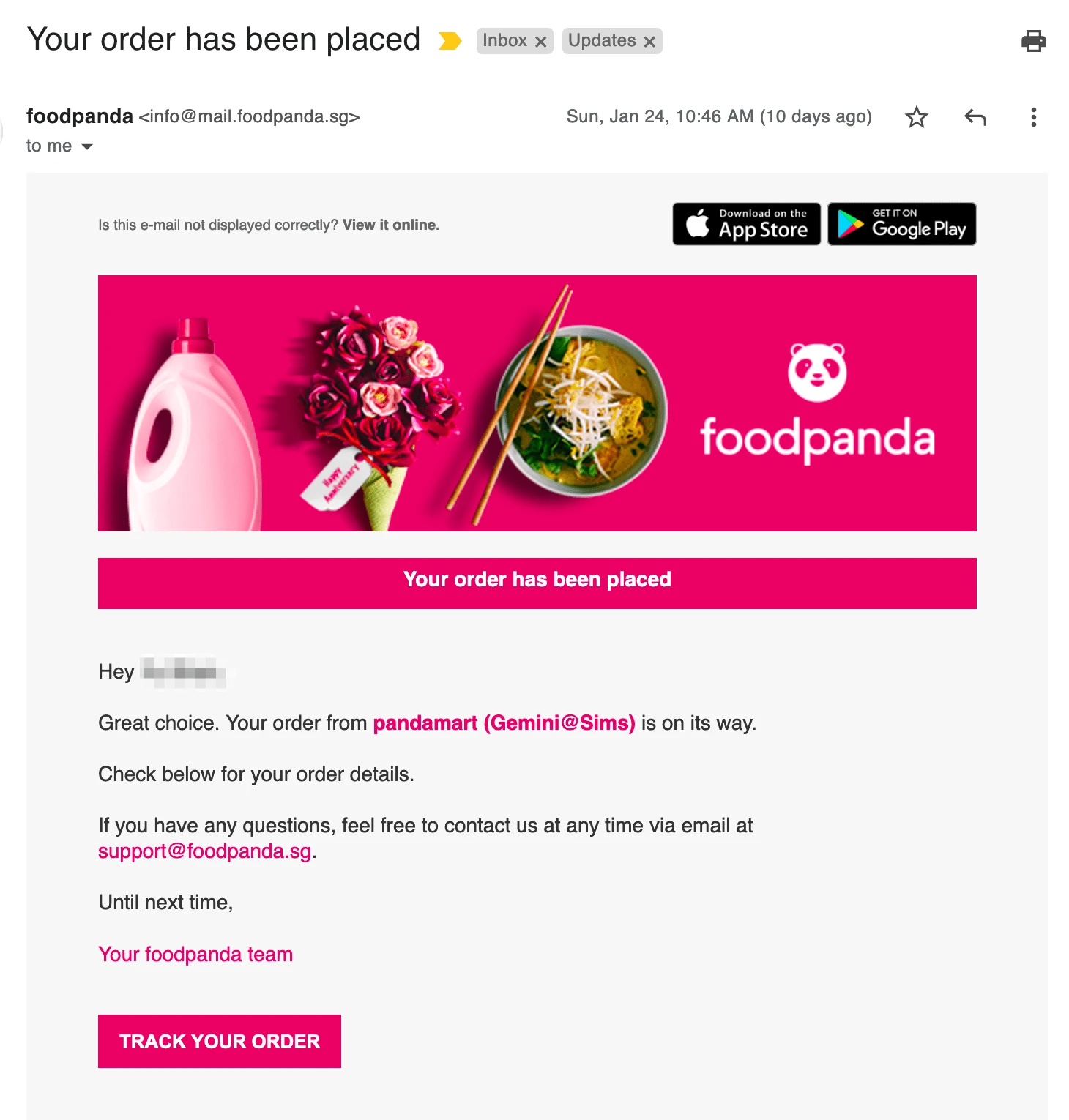
In MailerSend, you can create beautiful, responsive email templates with our intuitive builders. Simply choose a pre-made email template to get a headstart, or build your own from scratch. The choice is yours.
11. Include a plain text version of your email
While responsive design is about inclusivity, including a plain text version is about accessibility. Some recipients may only have access to low-bandwidth networks. Others may be using a language translator, screen reader or a high contrast theme for legibility. Learn more about email accessibility.
Pairing a plain text email with your HTML email will ensure the widest possible reach for your sendings. Just make sure your plain text version follows your HTML version closely so that your messaging doesn’t vary too much between each version.
Amazon Fresh, the online grocery store of Amazon, illustrates this well with their plain text email. It uses ASCII characters to replicate the formatting of the HTML version. The only thing missing is a button for the CTA!
HTML version of order confirmation email
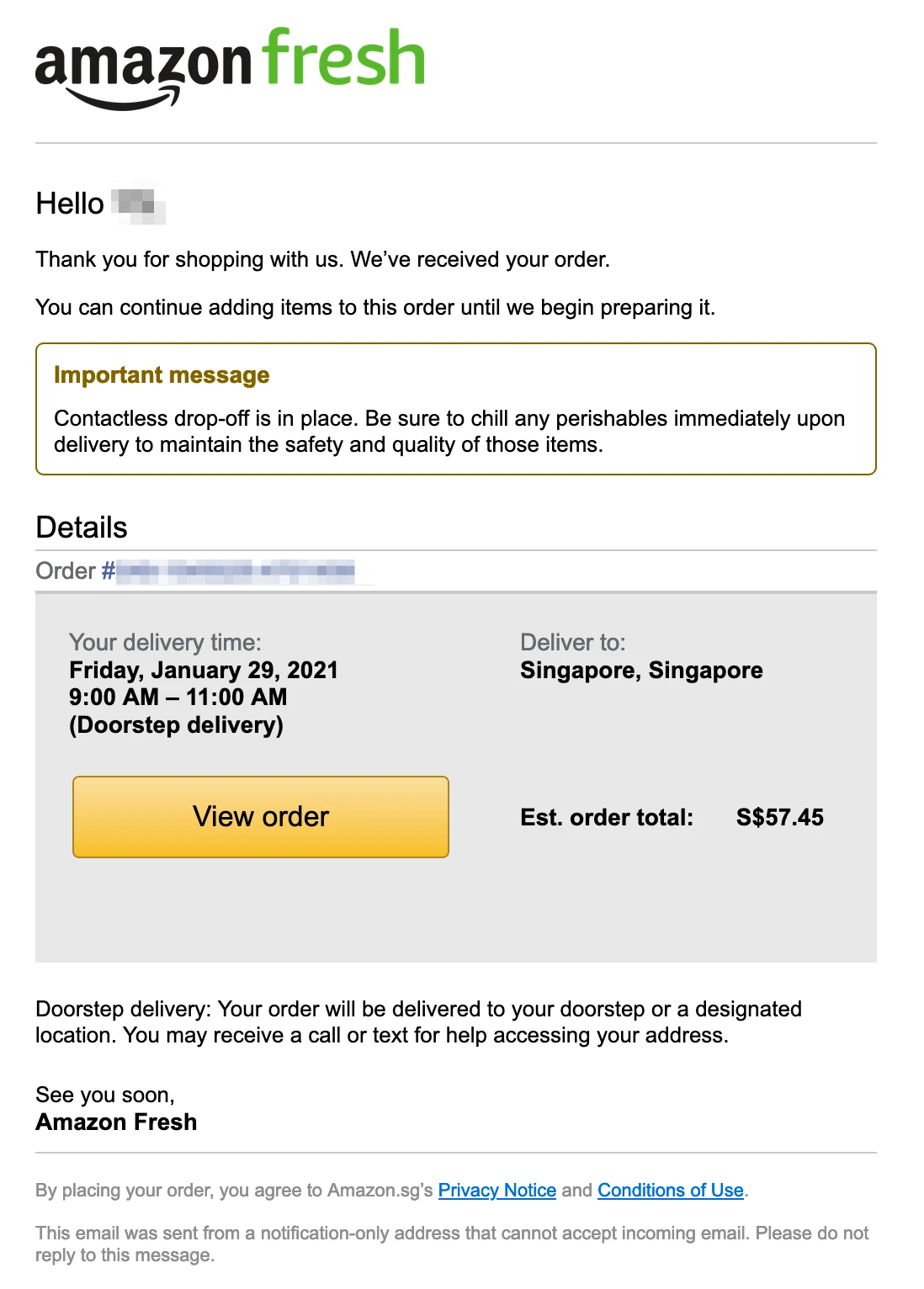
Plain text version of order confirmation email
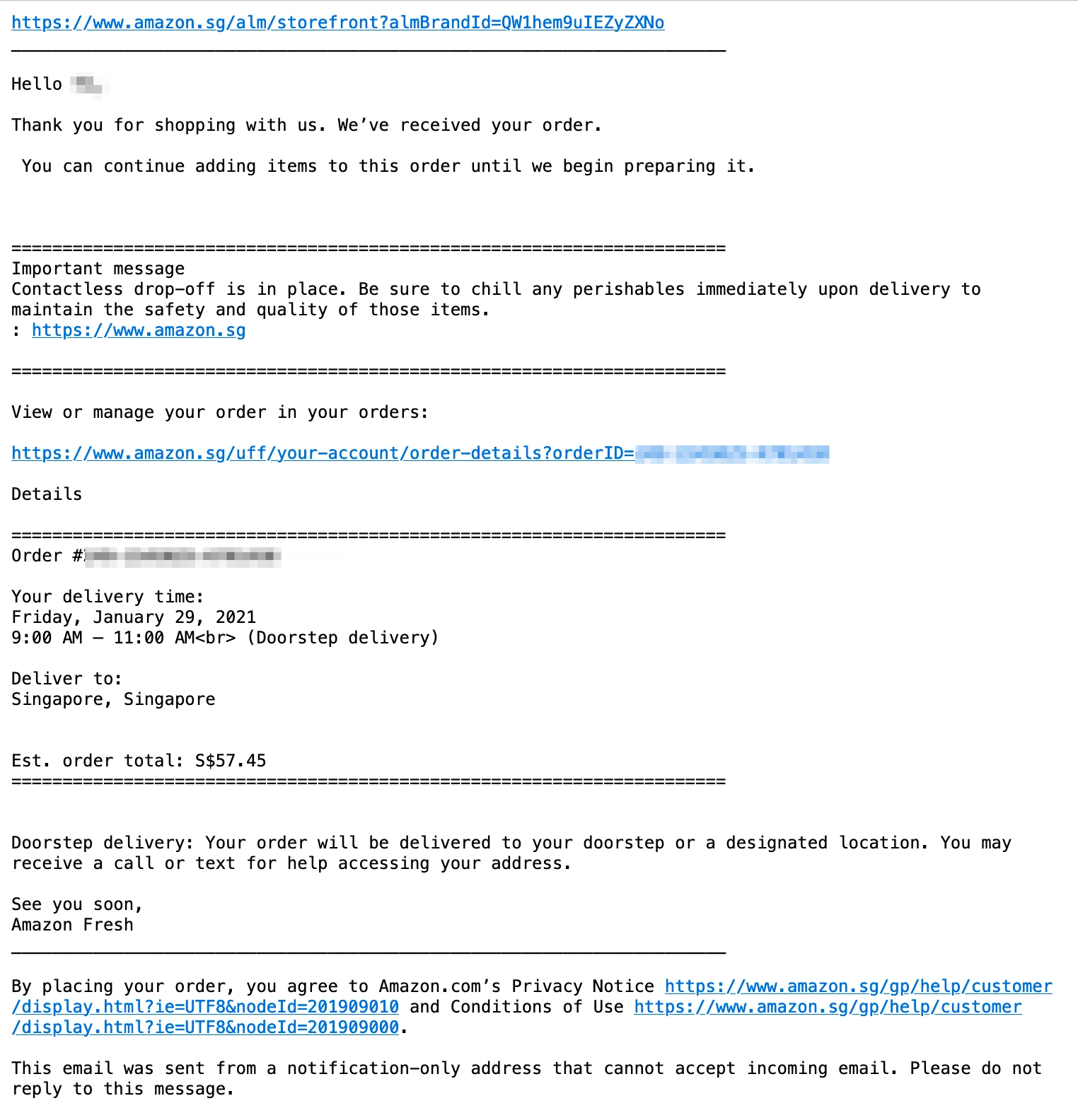
12. Adopt email authentication and security practices
Customers expect to receive transactional emails immediately intheir inbox—they don’t want to go hunting around in the spam or junk folders. Transactional emails, by nature, are important and they should reach the inbox every time.
You can improve your deliverability and protect your sending reputation by setting up your SPF, DKIM and DMARC records. All of these work together to prove who you really are, securely sign your emails, and prevent domain spoofing.
Secure your sending domain even further by setting up a custom return-path. This is an email address where bounced emails are sent. You can then take action to remove these emails from your list and preserve your sender reputation.
13. Allow people to manage their email preferences
While all transactional emails are important, some people may not want to receive every single notification or update. If you’re on a buying spree during a seasonal holiday, for example, your inbox will fill up with shopping cart and shipping confirmation notices very quickly!
Give recipients a way to manage their notifications and unsubscribe. This will help them keep their inbox clear of clutter, reserving it for the most relevant information. Plus, they’ll be less likely to mark your emails as spam.
AliExpress shows how it's done by allowing you to manage the notification emails that you receive. Click on a link in their order confirmation email...
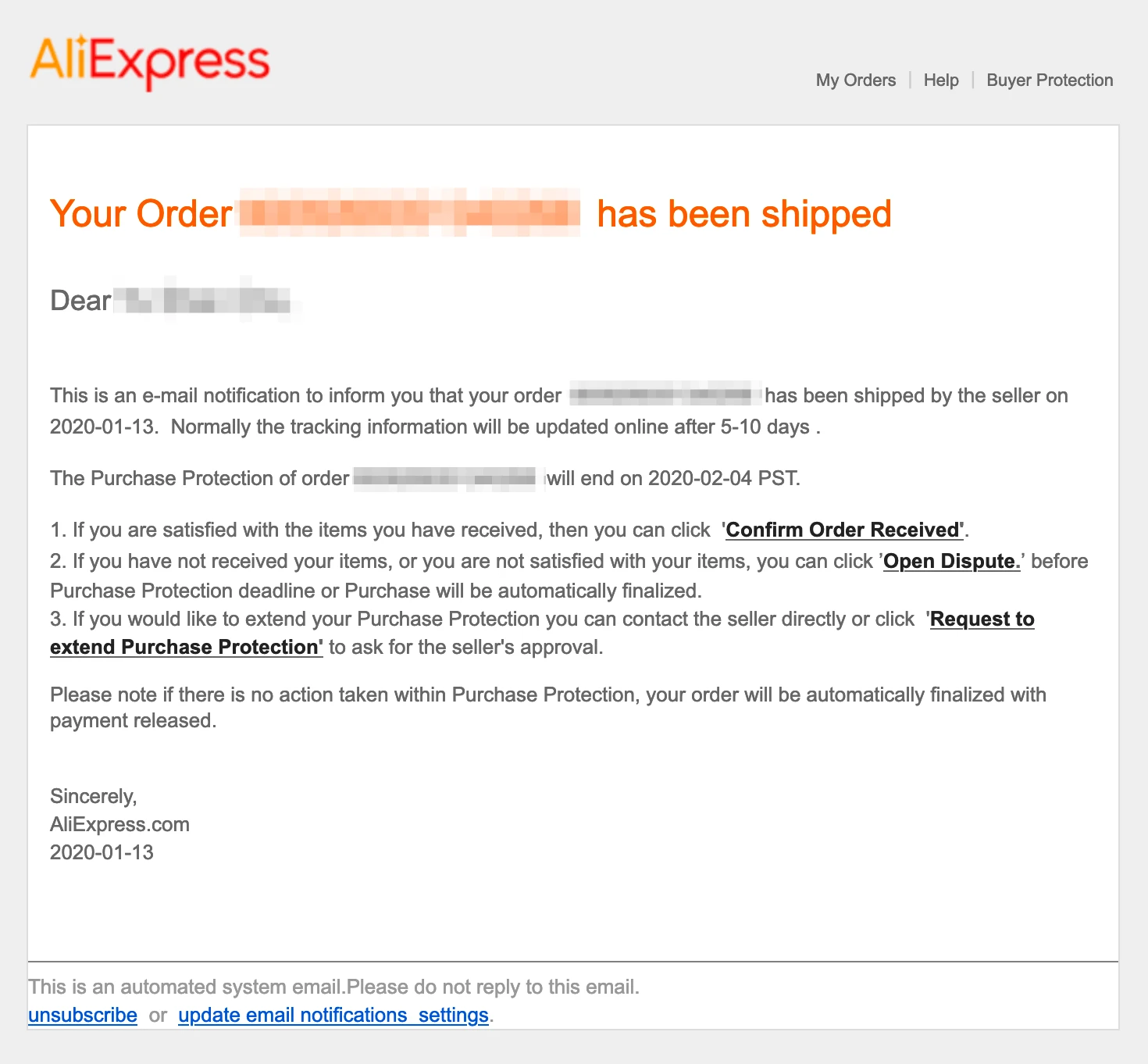
...and you’ll be brought to a web page where you can choose to opt out of emails altogether.

14. Monitor your email activity regularly
Email marketers keep an eye on opens, clicks, bounces and spam complaints to optimize deliverability and conversion rates. You should do the same with email activity for transactional emails as they may not always land in the inbox.
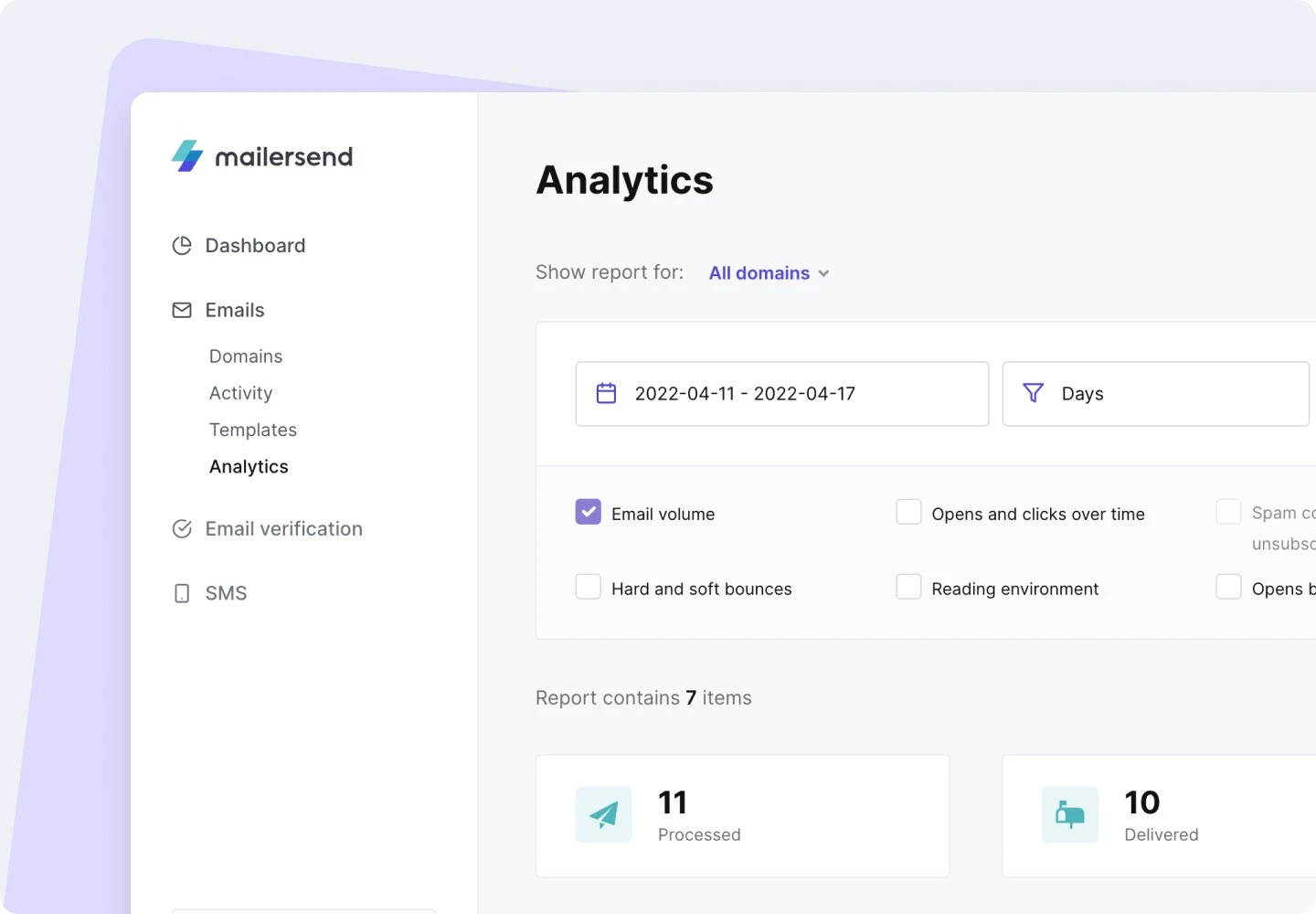
Sometimes your emails may end up in the spam or junk folders—or not be delivered at all. Possible reasons why this may happen include being blacklisted after hitting a spam trap, mixing marketing and transactional emails, or introducing spam-like words in your emails.
Here are some best practices to avoid spam filters and improve your deliverability from our email verification partner, MailerCheck.
You can use real-time email analytics tools to keep track of key metrics. Minimizing soft and hard bounces, for example, improves your deliverability, protects your sender reputation, and contributes to healthy list growth. Learn what works and what needs optimization so you can keep improving your email performance.
You can also keep tabs on which emails are getting the most opens and clicks and which ones aren’t. Then, you can take steps to optimize emails for better performance, for example, by improving your subject lines, content and CTAs.
15. Follow data protection rules (GDPR)
Unlike marketing emails, you do not need opt-in consent to send transactional emails to customers and users. This is because transactional emails fall under the lawful base of “Legitimate interest” for sending emails. This means that typically, transactional emails are used to communicate vital information to a customer or user.
Awesome! Right? Yes, but while you don’t need opt-in consent for transactional emails, you still need to follow GDPR and the data processing laws that surround it. So make sure that your transactional emails are free from overly promotional content and that you process data compliantly.
16. Pick a reliable email service provider
How you write, design and send transactional emails can make a difference between a poor customer experience and a good one. Choose an email service provider that gives you the tools to create dynamic emails and a track record for getting emails delivered.
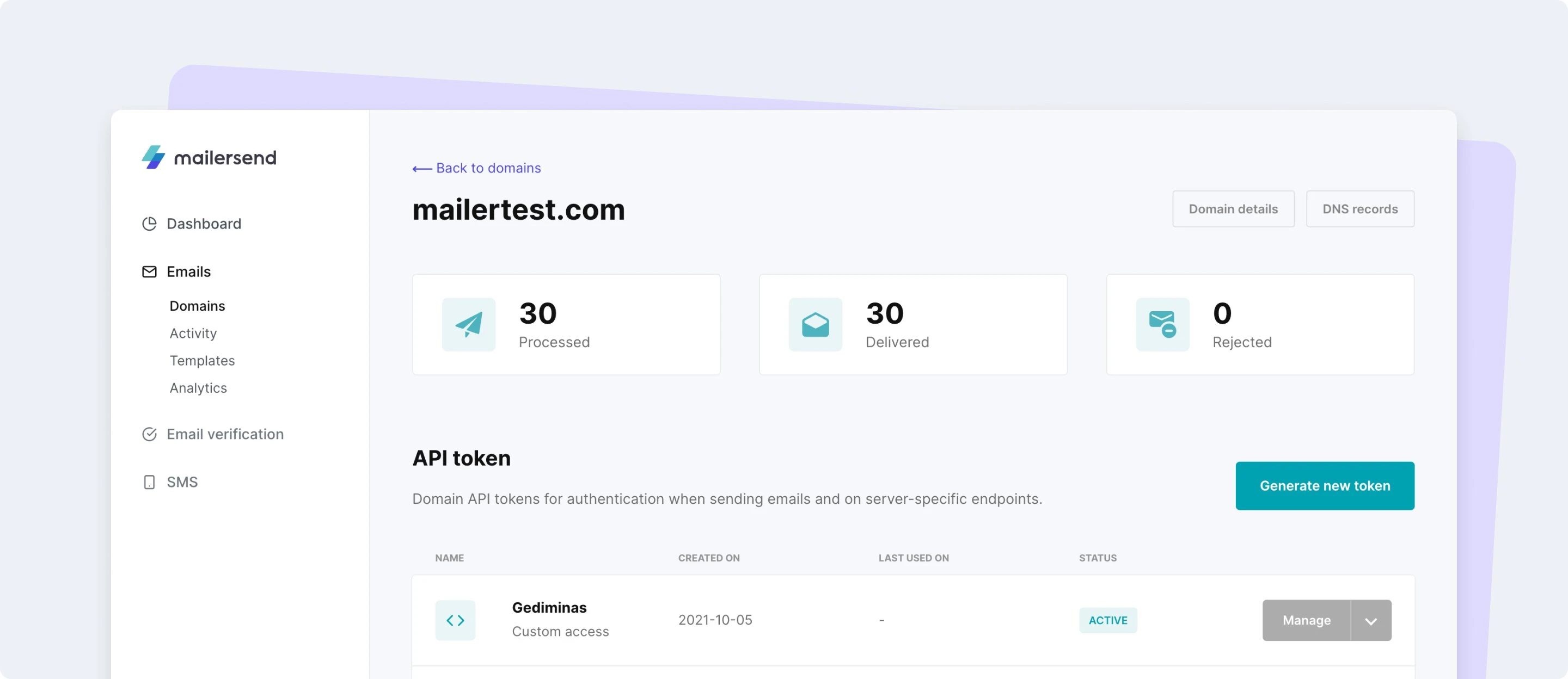
Here’s how MailerSend can help you develop best practices:
Collaborate with your teams to design responsive email templates that look good on any device. Take your pick of an intuitively-designed drag & drop builder, work with code in an HTML email editor, or start writing immediately with a rich-text editor. Then create a plain text version of your email in an instant!
Leverage a powerful sending infrastructure that gives you the flexibility to start with sending just a few emails each month and then scale to sending millions. The entire delivery process is automatically managed to give your emails the best chance of landing in the inbox.
Track and monitor your emails to find out what works best and what needs optimizing. A real-time email activity feed helps you troubleshoot sendings, while advanced email analytics show where you can improve deliverability and engagement.
Send transactional emails from your apps with a flexible email API or industry-standard SMTP. Both allow you to quickly integrate email sending and safeguard your sending domain with SPF and DKIM DNS records.
Split test email templates to find out which subject lines and content perform the best with your audience. Test up to 5 variations of a single template at a time.
Give your customers the best experience now
Transactional emails should never be an afterthought—they are essential part of the brand experience and customer journey, and one that can set you apart from your competitors. With their high open rates, there is tons of potential to connect with customers and increase engagement, and with this guide, you now know how!
Which best practice will you be using next for your transactional emails? Share in the comments!
Join MailerSend now
Sign up for a free account and get access to all of the great features that will make your transactional email a success. Get 500 emails/month free.


